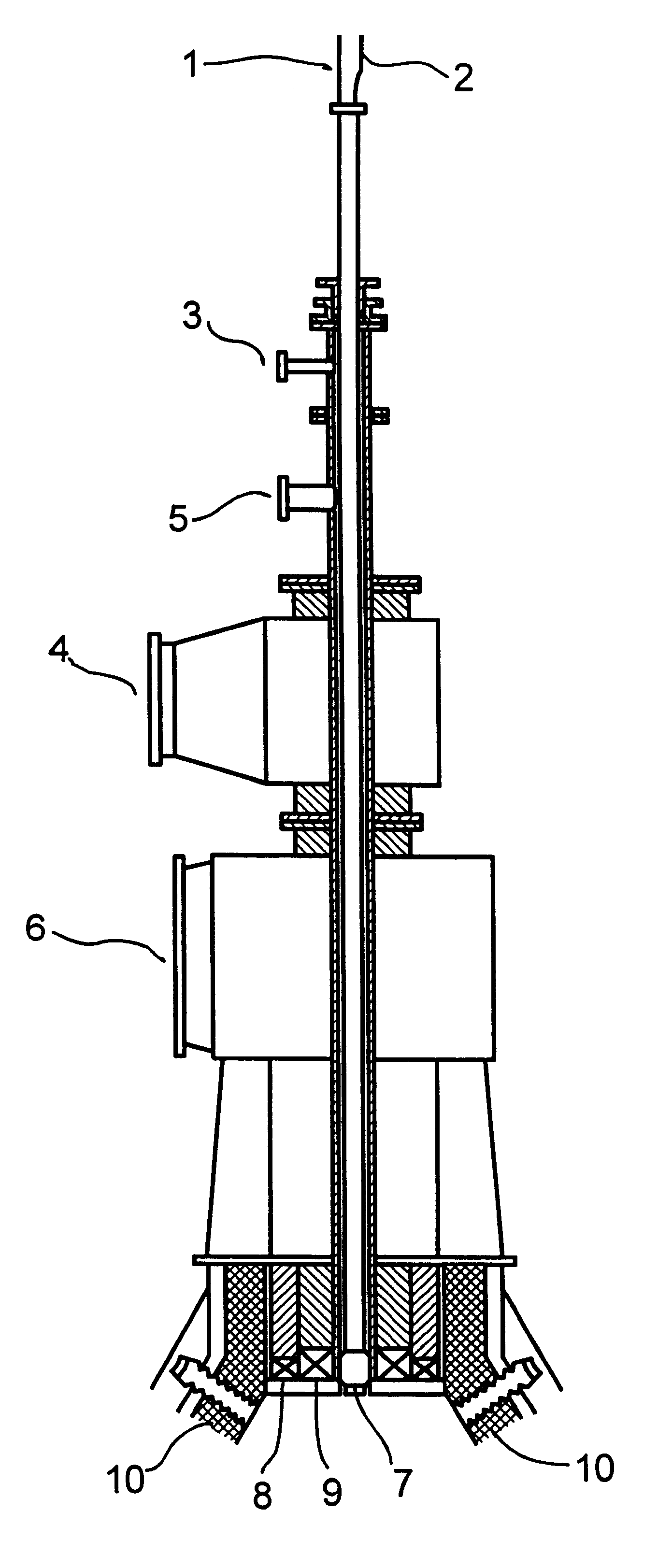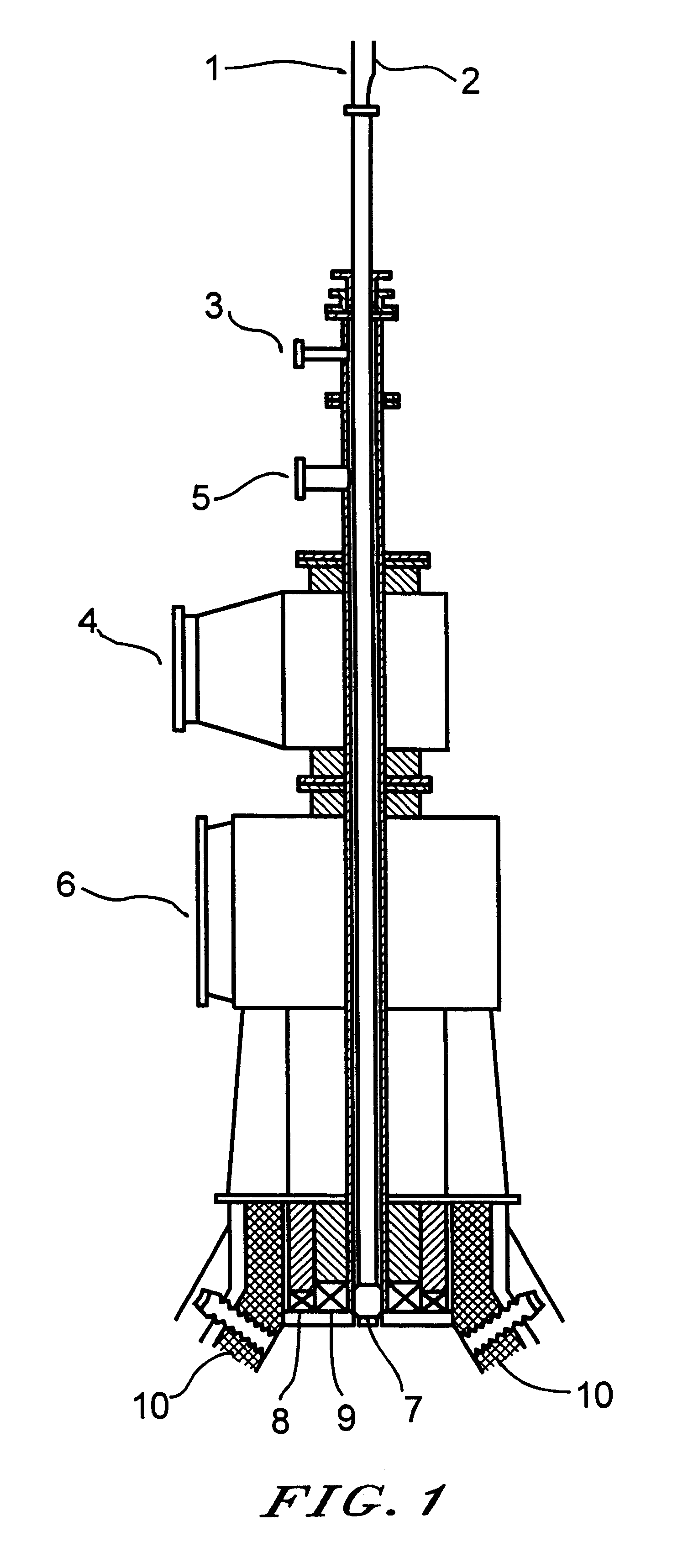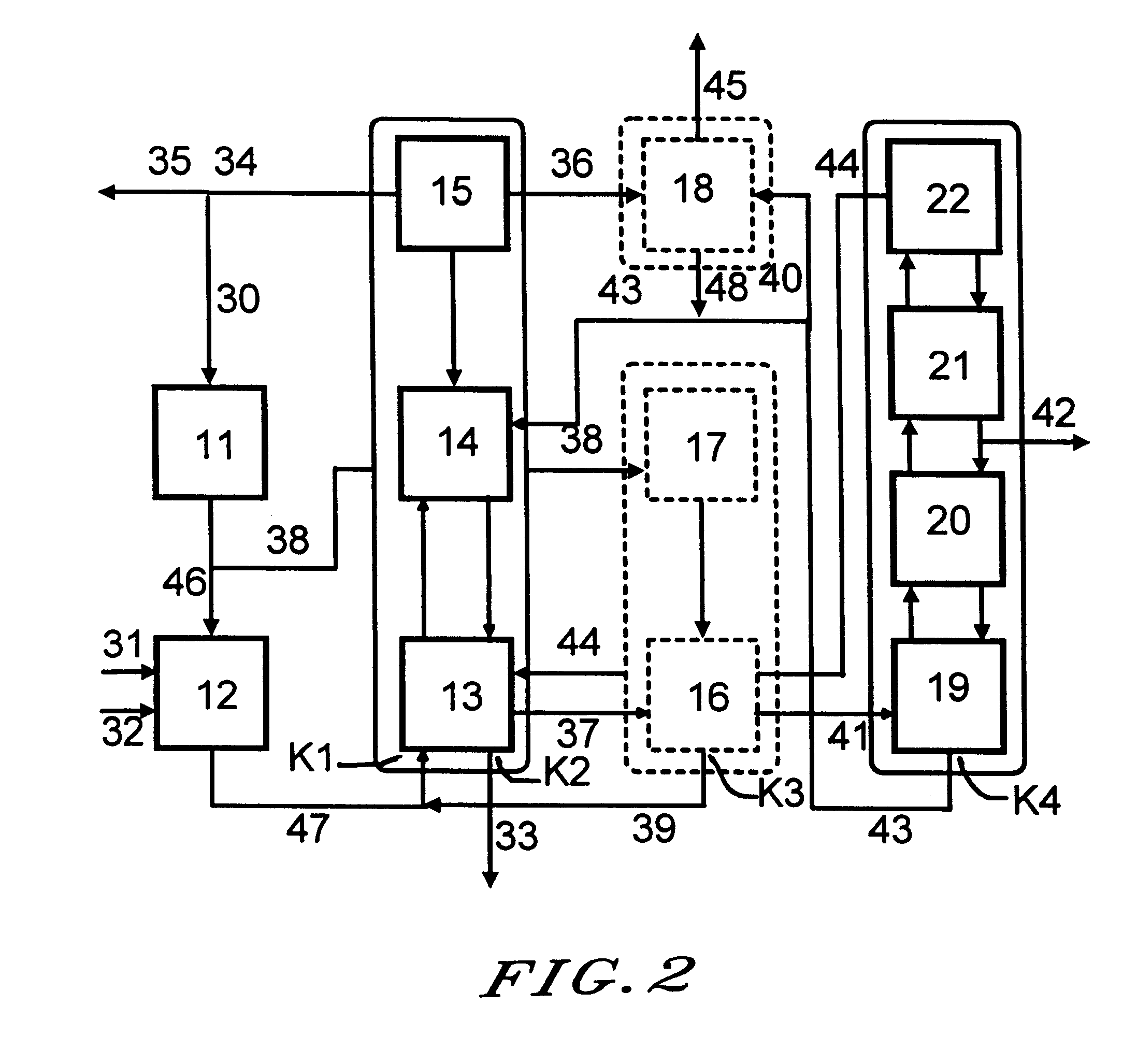Method for removing by-products obtained when producing acrylic acid or methacrylic acids
- Summary
- Abstract
- Description
- Claims
- Application Information
AI Technical Summary
Problems solved by technology
Method used
Image
Examples
experiment 1
Residues having the following composition, based in each case on the crude product:
gaseous stream of secondary components (1) 38.5% v / v
liquid aqueous stream of secondary components (2) 3.7% w / w
liquid pasty organic stream of secondary components (3) 0.3% w / w
was disposed of by burning the gaseous and liquid aqueous streams (1) and (2) until free from residue and disposing of the stream of components 3 externally.
During burning the temperature at the end of the combustion chamber was approximately 904.degree. C. An increase in the production of high-pressure steam by 22.4% compared with a blank experiment, which was carried out using support
gas instead of the streams of secondary components to be disposed of, was found.
experiment 2
Residues having the following composition, based in each case on the crude product:
gaseous stream of secondary components (1) 38.50% v / v
liquid aqueous stream of secondary components (2) 3.7% w / w
liquid pasty organic steam of secondary components (3) 0.4% w / w
were disposed of by feeding all three streams of material to the burner system described above. Since in this case the stream of secondary components 3 was also burnt with the other steams, a nozzle having a further annular feed gap was used in the burner system.
There was found to be an increase in steam generation of 24.6% compared with the blank experiment (burning with support gas only).
The present experiments thus show that the process of the invention provides for the residue-free disposal of streams of secondary components that are formed during the preparation of acrylic acid.
PUM
| Property | Measurement | Unit |
|---|---|---|
| Angle | aaaaa | aaaaa |
| Angle | aaaaa | aaaaa |
| Fraction | aaaaa | aaaaa |
Abstract
Description
Claims
Application Information
 Login to View More
Login to View More - R&D
- Intellectual Property
- Life Sciences
- Materials
- Tech Scout
- Unparalleled Data Quality
- Higher Quality Content
- 60% Fewer Hallucinations
Browse by: Latest US Patents, China's latest patents, Technical Efficacy Thesaurus, Application Domain, Technology Topic, Popular Technical Reports.
© 2025 PatSnap. All rights reserved.Legal|Privacy policy|Modern Slavery Act Transparency Statement|Sitemap|About US| Contact US: help@patsnap.com



